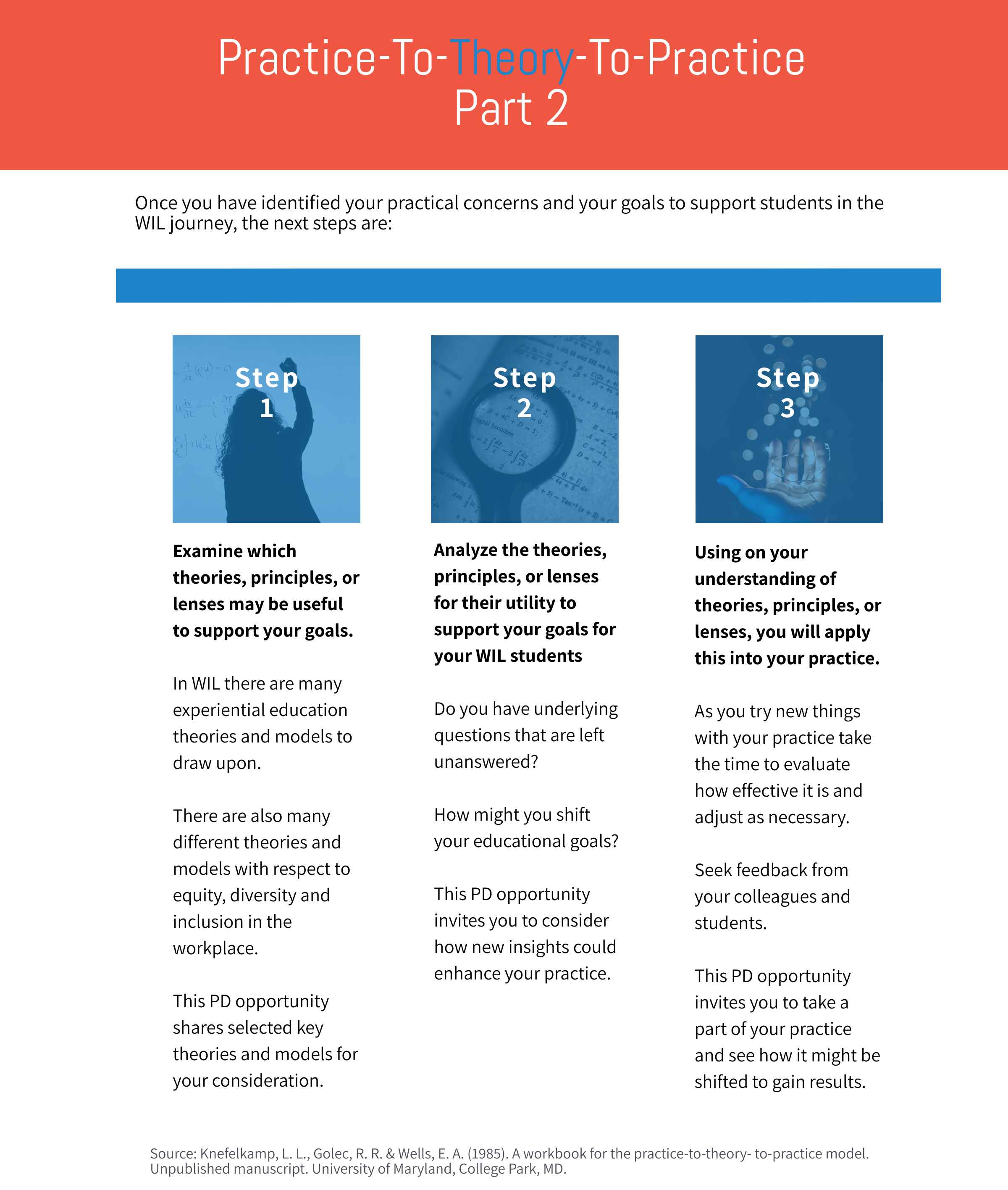WIL as a Field Module Overview
“Theory can serve as an empathy tool—
providing views of how students think about their world and how they may be feeling about the issues in their lives” (Knefelkamp, Golec, & Wells, 1984, p. 5).
This is Part 2 of the PTP approach, which focuses on select theories and models we can use to inform WIL program design and practice with respect to student learning. As you explore some of the ideas presented in the next few sections, think about whether /how they might impact or relate to the issue or part of your practice you selected to examine in Part 1 of the PTP approach.

In this section, you will revisit the underpinnings of WIL and foundational theories that help us understand more about how students learn in WIL. This understanding is important to your role as a WIL Practitioner so that you can design and deliver the best activities and resources for your students throughout their WIL journey. Perhaps also, new insights may inspire you to delve more deeply into issues of particular interest and in so doing contribute to the overall advancement of WIL as a field.
This refresh on the field of WIL is primarily to assist you in addressing the practice issues and questions you identified in the first section of this professional development opportunity. The theories, lenses, research, and literature presented in the forthcoming sections aim to support the advancement of your goals and help you bring about the professional changes you determine, in evidence-based ways. By grounding your choices in relevant experiential education learning theories and models, you have some assurance that your resulting shifts in practice will be in support of student learning.
Throughout this section, you will be reviewing several theories and models and using them to understand how they might challenge or support your professional practice. When reviewing theories in general, and recognizing our cultural lenses, Knefelkamp, Golec, & Wells (1985) remember to consistently apply two important principles of multicultural awareness so that we:
-
- Examine, in critical ways, the assumptions and basic tenets of these theories to determine what constructs can be helpful in understanding the diversity of students in a range of contexts (and which constructs are not).
- Examine how our identities, experiences, and worldviews shape the ways we interpret and apply theory (Pope, Reynolds, & Mueller, 2019)."
Remember in your journal reflections to draw connections between the theory and your practice. We also invite you to take a deeper look into various related topics that may be of interest to you. These will be in the form of embedded links to relevant WIL resources should you want to explore a topic in more detail or in a broader context. Further we invite you to engage in your own explorations and a great place to start is the International Journal of Work-Integrated Learning (IJWIL) Journal and in particular the Canadian Special Issue. All resources you engage with help provide the evidence-based information you may need to make a stronger case for WIL program changes at your institution.